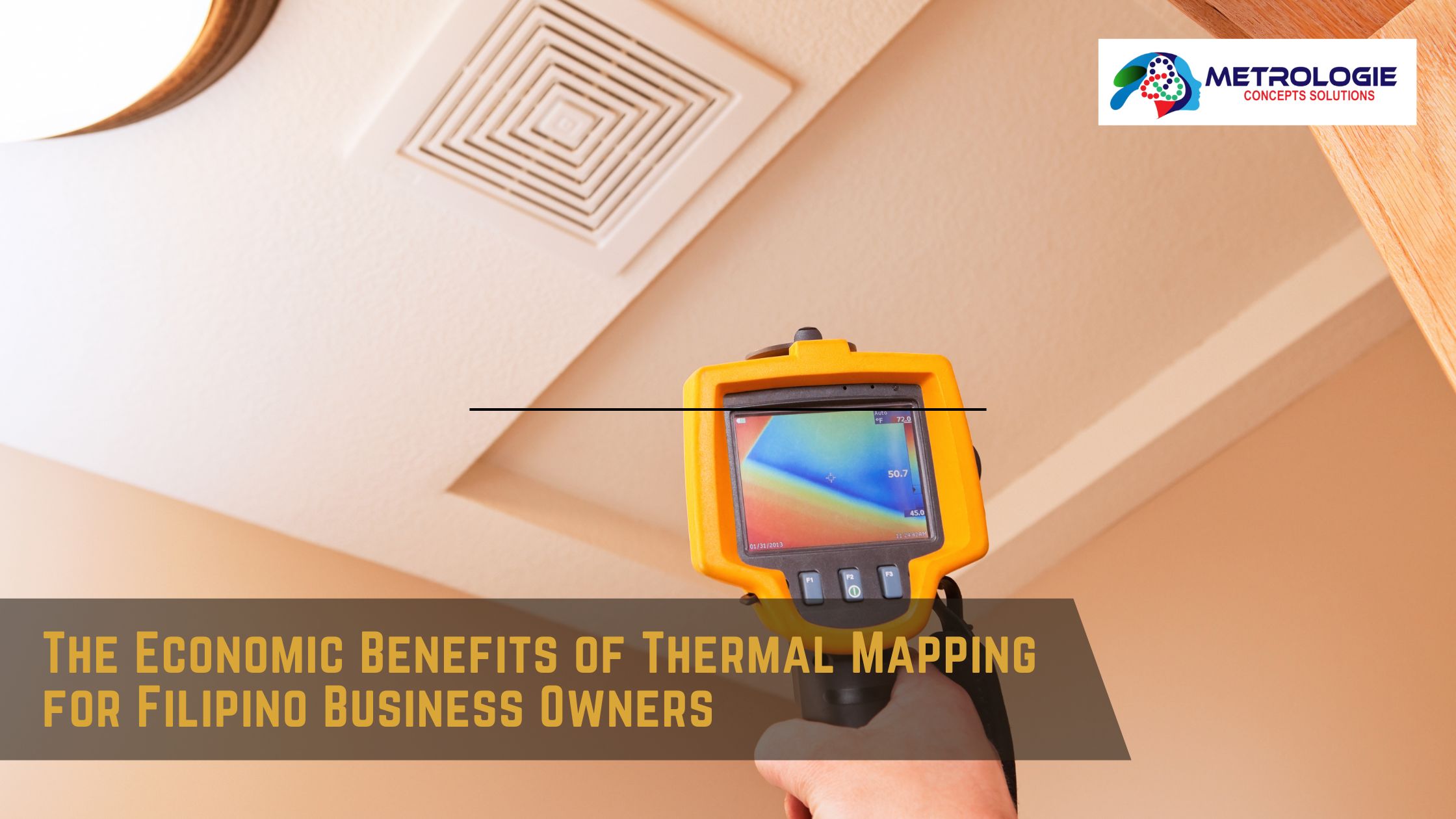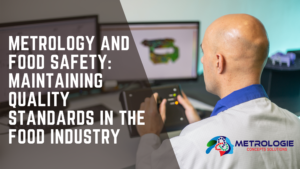1. Introduction: What is Thermal Mapping?
Thermal mapping, also known as thermal imaging or thermography, is the process of using infrared technology to capture temperature variations in a given environment. By creating a visual “map” of heat patterns, thermal mapping helps identify inefficiencies, energy losses, and equipment malfunctions that are otherwise invisible to the naked eye.
For Filipino business owners, thermal mapping offers a unique opportunity to optimize operational processes. Whether it’s a large-scale manufacturing facility, a commercial office, or an agricultural processing plant, thermal mapping can help pinpoint inefficiencies and provide actionable insights for improving energy usage and reducing costs.
2. How Thermal Mapping Works
Thermal mapping relies on infrared cameras and sensors to detect heat emitted by objects, machines, or areas within a facility. These cameras translate heat signals into visible images, where different colors represent varying temperatures. For example, warmer areas may appear in red or orange, while cooler regions may be shown in blue or green.
Once these images are captured, data analysis software is used to interpret the thermal patterns and identify problem areas such as:
- Heat leaks from poorly insulated areas.
- Overheating machinery that may require maintenance.
- Temperature imbalances affecting the efficiency of HVAC systems.
By identifying these issues, business owners can take targeted action to improve efficiency and prevent costly failures, ultimately enhancing their economic bottom line.
3. Economic Advantages of Thermal Mapping for Filipino Businesses
Reducing Energy Costs
One of the most significant economic benefits of thermal mapping is the potential for reducing energy costs. For many Filipino businesses, electricity and fuel consumption represent a substantial portion of operational expenses. By using thermal mapping to detect inefficiencies such as air leaks, poor insulation, or overheating equipment, business owners can optimize their energy usage.
For example, a manufacturing plant may find that certain machinery is consuming more energy than necessary due to improper maintenance. A retail mall could identify areas where cooling is uneven, leading to higher HVAC costs. Addressing these inefficiencies can lead to significant energy savings, translating into lower utility bills and increased profitability.
Enhancing Equipment Lifespan
Thermal mapping also helps to extend the lifespan of equipment by identifying overheating or excessive wear and tear before they lead to failure. Machines that operate at high temperatures for extended periods are more likely to experience breakdowns or require expensive repairs.
By proactively monitoring equipment performance through thermal mapping, business owners can schedule timely maintenance, preventing costly downtime and ensuring that machinery operates at peak efficiency. This proactive approach not only saves money on repairs but also reduces the need for early equipment replacements, contributing to long-term cost savings.
Minimizing Downtime
For businesses that rely heavily on machinery and equipment, minimizing downtime is critical to maintaining productivity and profitability. Unplanned equipment failures can result in production delays, missed deadlines, and lost revenue. Thermal mapping enables business owners to identify potential issues before they escalate, allowing for preventive maintenance and reducing the risk of unplanned downtime.
In industries like manufacturing, food processing, and even retail, minimizing downtime can lead to substantial economic benefits by ensuring continuous operations and maximizing output.
4. Thermal Mapping Across Different Sectors
Manufacturing and Industrial Applications
In the manufacturing sector, thermal mapping is invaluable for monitoring the performance of heavy machinery, electrical systems, and HVAC systems. Overheating motors, faulty wiring, and energy inefficiencies can be detected early, enabling businesses to reduce operational costs and improve overall production efficiency.
Filipino manufacturers, particularly in sectors like automotive, electronics, and textiles, can benefit from thermal mapping by optimizing their energy use, enhancing safety, and preventing costly equipment breakdowns.
Agriculture and Food Processing
The agriculture and food processing industries in the Philippines face unique challenges related to temperature control. Thermal mapping can be used to monitor the performance of refrigeration units, cold storage facilities, and processing machinery to ensure that food products are stored and processed at optimal temperatures.
This is particularly crucial for maintaining the quality and safety of perishable goods, reducing spoilage, and ensuring compliance with food safety regulations. By optimizing energy usage in these temperature-sensitive operations, Filipino businesses can reduce waste and improve their profit margins.
Retail and Commercial Real Estate
In commercial real estate, particularly retail malls and office buildings, HVAC systems account for a significant portion of energy costs. Thermal mapping can help building managers identify temperature imbalances, insulation issues, or inefficient cooling systems, leading to reduced energy consumption and improved comfort for tenants and customers.
For Filipino business owners in the real estate sector, thermal mapping can contribute to lower operational expenses, enhanced tenant satisfaction, and increased property value.
Healthcare and Pharmaceuticals
In healthcare and pharmaceutical facilities, maintaining precise temperature control is essential for ensuring the safety and efficacy of medications, vaccines, and sensitive medical equipment. Thermal mapping can be used to monitor temperature-controlled environments, such as laboratories, storage rooms, and operating theaters.
By optimizing temperature management, healthcare providers and pharmaceutical companies in the Philippines can ensure compliance with regulatory standards, reduce energy costs, and improve patient outcomes.
5. Key Technologies Used in Thermal Mapping
Infrared Cameras
Infrared cameras are the primary tool used in thermal mapping. These cameras detect infrared radiation emitted by objects and convert it into thermal images. Modern infrared cameras are highly accurate, providing detailed heat maps that can reveal temperature variations with precision.
Data Analysis Software
Once thermal images are captured, data analysis software is used to interpret the results. This software allows technicians and business owners to analyze temperature trends, identify problem areas, and generate actionable reports for optimizing equipment performance and energy efficiency.
Sensors and IoT Integration
In some cases, thermal mapping can be integrated with sensors and Internet of Things (IoT) devices to provide real-time temperature monitoring. This allows businesses to continuously monitor critical areas and receive alerts if temperature anomalies are detected. IoT integration is particularly useful for industries that require constant temperature control, such as food processing and healthcare.
6. Case Studies: Real-World Applications of Thermal Mapping
Case Study 1: Manufacturing Plant in Laguna
A manufacturing plant in Laguna implemented thermal mapping to monitor its electrical systems and HVAC performance. The thermal images revealed several hotspots in the plant’s electrical wiring, which indicated potential fire hazards. By addressing these issues early, the plant was able to prevent a major safety incident, reduce energy consumption by 15%, and extend the lifespan of its machinery.
Case Study 2: Retail Mall in Makati City
A retail mall in Makati City used thermal mapping to optimize its HVAC system and reduce cooling costs. The thermal images revealed that certain areas of the mall were being over-cooled, while others were not receiving enough airflow. By recalibrating the HVAC system and improving insulation in key areas, the mall was able to reduce its energy bills by 20%, leading to substantial cost savings.
7. Challenges and Considerations in Implementing Thermal Mapping
Cost of Implementation
While thermal mapping offers significant long-term savings, the initial cost of implementing the technology can be a barrier for some businesses. High-quality infrared cameras and data analysis software can be expensive, and additional costs may be incurred for hiring trained technicians to conduct the mapping.
However, the potential return on investment (ROI) through energy savings, reduced maintenance costs, and improved operational efficiency often outweighs the initial expenses.
Training and Expertise Required
To fully leverage the benefits of thermal mapping, business owners need to ensure that their staff is adequately trained in using the technology. Understanding how to capture and interpret thermal images requires specialized knowledge, and businesses may need to invest in training or work with external experts.
Maintenance and Regular Audits
Thermal mapping is not a one-time solution; it requires regular audits and maintenance to ensure that systems remain optimized. Ongoing monitoring is necessary to identify new issues as they arise and to adjust processes as needed.
8. Future Trends in Thermal Mapping
AI and Predictive Analytics
The future of thermal mapping lies in the integration of artificial intelligence (AI) and predictive analytics. By combining thermal imaging data with AI algorithms, businesses can predict potential equipment failures and energy inefficiencies before they occur, allowing for even more proactive maintenance.
Integration with Smart Building Systems
Smart building systems are becoming more common in the Philippines, particularly in urban areas like Metro Manila. Thermal mapping can be integrated with these systems to provide continuous monitoring and automated adjustments to HVAC settings, lighting, and other energy-consuming systems.
Industry 4.0 Applications
As Industry 4.0 technologies continue to evolve, thermal mapping will play a key role in creating more efficient and automated manufacturing processes. Filipino businesses that embrace these innovations can gain a competitive edge by optimizing their operations and reducing energy costs.
9. Conclusion: Why Filipino Business Owners Should Invest in Thermal Mapping
Thermal mapping offers significant economic benefits for Filipino business owners across various industries. From reducing energy costs and enhancing equipment lifespan to minimizing downtime and improving operational efficiency, the advantages of thermal mapping are clear.
By investing in thermal mapping technology and staying ahead of emerging trends, Filipino businesses can improve their profitability, reduce their environmental impact, and ensure long-term success in an increasingly competitive market.




